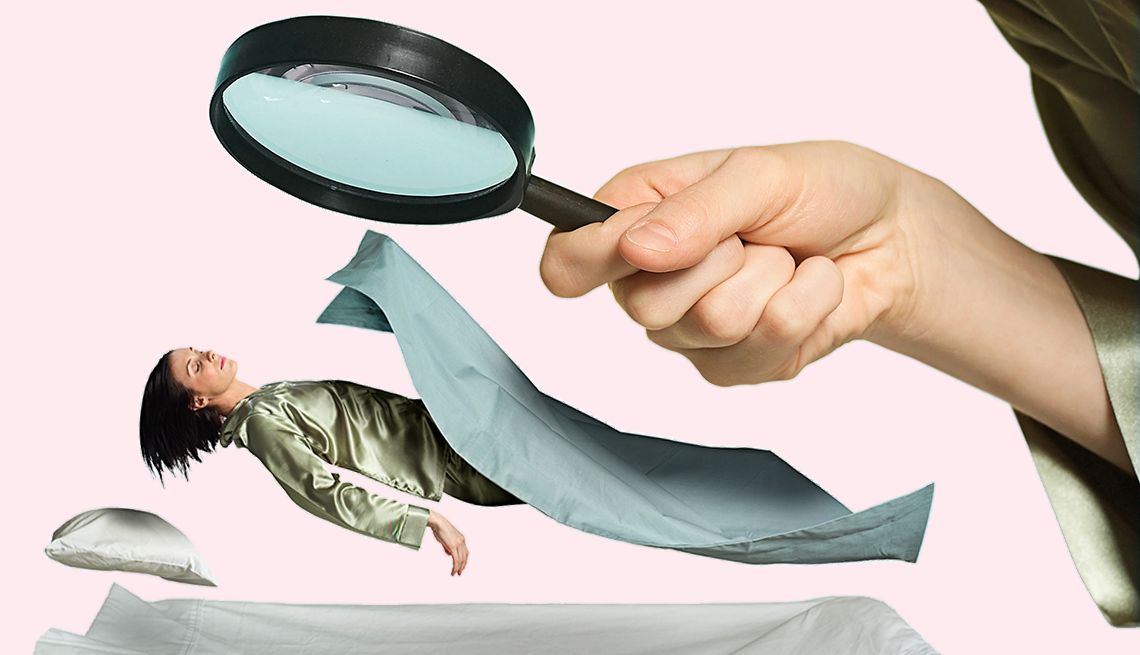AARP Hearing Center


Some people can’t fall asleep at night; others drift off easily but awaken in the wee hours. Some people snore, and some act out their dreams. Whatever goes bump in the night, sleep troubles aren’t without consequence.
Left unchecked, undiagnosed and untreated, sleep disorders can start the dominoes falling, dangerously disrupting cardiovascular function, undermining overall health and making it difficult to get through the day. That’s why you should never resign yourself to poor sleep, says Clete Kushida, M.D., a neurologist specializing in sleep disorders. Instead, talk to your doctor, who can help determine the root cause of your overnight issues.
“We know that sleep and sleep disorders have a profound impact on health,” says Kushida, a professor of psychiatry and behavioral sciences and medical director of sleep medicine at Stanford University.
Sleep loss and sleep deprivation — independent of sleep disorders — can be disruptive and can affect your health in some ways, for example, with weight gain. “But with sleep disorders, like obstructive sleep apnea, there’s a strong link [to] endocrine disorders, high blood pressure, stroke, heart attack — all these things,” Kushida says.
Research conducted by AARP finds that 70 percent of adults ages 40 and older experience sleep difficulties. However, 4 in 10 adults with untreated sleep issues presume that their poor sleep isn’t that serious.
What can you learn from a sleep study?
Health risks of interrupted sleep
Untreated sleep disorders can increase your risk of several health conditions, including:
- Heart failure
- High blood pressure
- Stroke
- Diabetes
- Depression
Sleep tests can help your doctor diagnose sleep-related disorders.
Source: National Heart, Lung and Blood Institute
Uncovering what’s happening when you turn out the lights can take some detective work, so often doctors will refer patients with sleep issues — or suspected disorders — for a sleep study to evaluate what’s happening when you’re dozing, says Fariha Abbasi-Feinberg, M.D., a spokesperson and board member of the American Academy of Sleep Medicine and medical director of sleep medicine for Millennium Physician Group in Fort Myers, Florida.
That includes monitoring a person’s breathing, heart rate and other vital signs. According to Medicare claims data, hundreds of thousands of these studies are conducted each year among older adults.
The aim of a sleep study is to pinpoint what kind of issues a patient is struggling with overnight. There are around 90 different sleep disorders, which are grouped into six major categories, Kushida says, including:
- Insomnia, defined as difficulty falling or staying asleep or waking up too early.
- Circadian-related sleep disorders, like delayed sleep-wake phase disorder, which causes a person to stay up and wake up later than they want.
- Sleep-related breathing disorders, such as sleep apnea, where relaxed throat muscles block the airway, stopping breathing many times a night.
- Sleep-related movement disorders, like restless legs syndrome.
- Parasomnias, which are unusual behaviors during sleep, like sleepwalking and REM sleep behavior disorder.
- Narcolepsy and hypersomnias, characterized by excessive daytime sleepiness.
Not every sleep study results in a diagnosis; and sometimes, multiple studies might be needed. But the data gathered helps doctors piece together what’s going on by documenting everything from a patient’s breathing difficulties to changes in heart rate and brain activity as well as significant movement overnight, Kushida notes.
“Additionally we have daytime tests that can also help to diagnose if the person has significant daytime sleepiness or might have things like narcolepsy,” Kushida says.





































































More From AARP
How to Create a Sleep Sanctuary and Other Tips for a Good Night's Sleep
13 habits to give your body the rest it needs
3 Reasons to Avoid Sleeping Pills
Sleep medication use is on the rise, especially in older adults
Wake Up More Refreshed With Our Smart Guide to Sleep
43 tips to help you fight those restless, endless nights and get the slumber you need